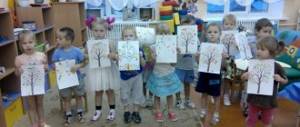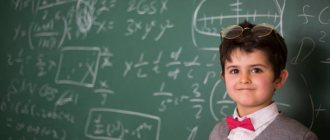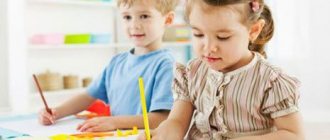Work program of the arts and crafts club “Wizards”
development of communication abilities;
carry out labor, polytechnic and aesthetic education of minors;
achieve maximum independence of children's creativity.
Lesson structure:
Demonstration and explanation of the leader.
Making crafts by children according to a sample, with the help of a leader.
Independent creative work of children.
Forms of work:
theoretical discussion of issues, practical use of acquired knowledge;
working with visual aids and visual materials;
practical classes on making crafts.
Methods:
Methods based on the way the lesson is organized
:
verbal (oral presentation, conversation, story.)
visual (illustrations, observation, demonstration (execution) by a leader, work based on a model, etc.)
practical (performing work according to instruction cards, diagrams, etc.)
Methods based on the level of activity of children:
explanatory and illustrative – children perceive and assimilate ready-made information (story, demonstration, illustration)
reproductive – minors reproduce acquired knowledge and mastered methods of activity (practical classes)
partial search – participation of circle members in a collective search, solving the task together with the leader
research – independent creative work of children
heuristic – creative tasks.
Methods based on the form of organizing children's activities in the classroom:
frontal – simultaneous work with all the guys
individual-frontal – alternating individual and frontal forms of work
group – organization of work in groups (when performing collective work, each group performs a specific task)
individual – individual completion of tasks, problem solving (each child must do his own craft)
collective - in the process of preparing and performing a collective composition, children work together, without sharing responsibilities.
The principles underlying the program:
accessibility (simplicity, compliance with age and individual characteristics);
visibility (illustrativeness, availability of didactic materials).
democracy and humanism (interaction between the leader and children in society, the realization of one’s own creative needs);
“from simple to complex” (having learned basic work skills, he applies his knowledge in performing complex creative work).
The topics of classes are built taking into account the interests of children and the possibility of their self-expression. As children master the content of the program, the pace of development of special skills, the level of independence, and the ability to work in a team are taken into account. The program allows you to individualize complex work: stronger children will be interested in a complex design, while less prepared ones can be offered a simpler work. At the same time, the educational and developmental meaning of the work is preserved. This makes it possible to warn the child against the fear of difficulties, to encourage him to create and create without fear.
Author's program Arts and Crafts Club
Topic 4.2. Creative layout composition
Students are offered sample topics: “On the streets of ancient Bulgar”, “Architectural monuments of Kazan”, “Ancient Rus'”, “Native Village”, etc. The structural structure of buildings and the proportional relationships of volumes are analyzed. The work is carried out by teams of 3-4 people. Materials: paper (white, colored), cardboard.
Section 5
Artistic processing of natural and artificial leather
Topic 5.1. Construction of a cardboard box
Students are shown samples of caskets and decorative boxes decorated with leather. Attention is paid to the configuration and originality of the design. The layout of the box is developed using drawing tools. Parts of the box are cut out of hard cardboard and glued together (PVA glue, tape).
Topic 5.2. Technology of decorating products with leather
To decorate the box, students use previously learned techniques (the “blind man’s buff” technique, gluing flat pieces of leather onto the background). Three-dimensional or flat flowers, leaves, insect figures, etc. made of leather are also used to decorate the product; braid, twine, wooden beads. The inside of the box is decorated with velvet fabric (paper).
Section 6
Decorative and design work
Topic 6.1. Preparing for the New Year
On the eve of New Year's events, students are involved in design activities; design of an exhibition of works, stage, participation in the design of wall newspapers, holiday posters, etc.
Section 7
Working with beads
Topic 7.1. Bead embroidery techniques
Bead embroidery in folk art and modern art. Demonstration of bead embroidered items. The simplest ways to embroider with beads. Sequence of embroidery with one and two needles. Development of an embroidery sketch for a decorative panel. Determining the color scheme of the composition, embroidering the product.
Section 8
Decouage
Topic 8.1. Decorative still life
The concept of still life. The history of the development of the still life genre. Basics of stylization in still life. Techniques for decorating the finished product (embroidery with beads, sequins, application of appliqué techniques, etc.)
Topic 8.2. Architectural motifs in decoupage
The final composition for decoupage. Requirements for its implementation. Basics of stylization of architectural forms. Basics of using ornamental decor in a composition. Approximate themes for the composition: “Radiant Siberia”, “Ancient City”, “St. Basil’s Cathedral”, “Orthodox Rus'”, etc.
Section 9
Decorative dolls
Topic 9.1. Doll making technology
Varieties of dolls (industrial, folk, souvenir, etc.). Types of materials used in making dolls. Demonstration of dolls made in the traditions of folk art. Development of a sketch of your own doll in folk style. Determination of materials, manufacturing technologies.
Educational program of the arts and crafts club in the preparatory group of the preschool educational institution
EDUCATIONAL PROGRAM “Master Crafts” circle for children 6-7 years old
Abstract: this program describes work with children of senior preschool age on artistic and aesthetic development. An educational and thematic work plan has been developed. The content of the program contains a photo of the craft and the material for its manufacture. Explanatory note This additional educational program has an artistic and aesthetic orientation. The novelty of this program is that it fully and widely specifies, supplements, expands and systematizes the use of non-traditional types of appliqué and design from paper and waste material through principles, forms and teaching methods; The structure of work with children and parents is described in detail. The entire process of children's activities is carried out through play, encouraging children to express themselves artistically. In the modern world, the formation of a child’s creative personality is one of the important tasks of preschool education. Taking into account that children spend most of their time within the walls of a preschool institution, it is obvious that this is where it is necessary to create favorable conditions for the development of the child’s creative abilities. To form a child’s creative personality, traditional means are not enough to fully express their fantasies. Productive activities, a variety of which include non-traditional types of appliqué, and construction from paper and waste material, are one of the effective methods of self-expression, development of the creative potential and individual abilities of each child. The active work of the circle will contribute to the development of artistic and aesthetic perception in the child; broadening one's horizons; development of emotional feelings, imagination, fantasy, thinking, hard work. The main goal of the program: artistic and aesthetic development of children of senior preschool age. Tasks. Develop fine motor skills of the hands. Teach how to create independent objects and crafts, encourage variability and non-standard solutions to individual problems. To instill in children an interest in artistic manual labor, forming a figurative idea in children, nurturing and developing their creative abilities. To develop in children a sense of proportion, color harmony, a sense of composition and rhythm. To develop technical skills in working with a variety of materials, including non-standard ones. Develop artistic taste. Provide an individual approach to children, both in classes and in free independent activities. The basis for the development of a work program for artistic and aesthetic development in children of senior preschool age were: The principles of organizing the work of the circle The principle of consistency and regularity of classes The principle of clarity (availability of demonstration material) and accessibility of the presented material for children of this age category The principle of presenting material from “simple to complex” The principle of continuity (the structure of classes is the same from year to year, but the presented task material becomes more complex, the requirements for the quality of work are increased) The principle of even distribution of the load, taking into account the individual capabilities of each child, avoiding overwork. The age of children participating in the implementation of this program is 6-7 years. The program is implemented during one year of study - 28 hours. The number of direct educational activities per year is 28, per week – 1 time in the afternoon. The duration of continuous direct educational activity for children 6-7 years old is 30 minutes. The program implementation period is from October to April. The form of work of the circle is thematic joint activity of children and the teacher. The form of organization of children is group. Forms of conducting classes: Exhibitions, gallery, competition, fair, creative workshop. Methods of work Verbal (conversation, story, reading fiction); Visual (demonstration by the teacher of the finished composition, examination of illustrations); Practical (children perform work according to a model). Expected results: As a result of training in this program, children are expected to acquire such knowledge, skills and abilities as: Enriching children's knowledge about different types of artistic creativity. Mastering new techniques for working with materials in different appliqué and design techniques The ability to independently plan your work and implement a plan technologically The ability to create compositions using suitable materials and tools The ability to follow the rules of safe work with the materials and tools used (scissors, small objects) Increasing the level of development of small skills motor skills and hand-eye coordination Forms for summing up the implementation of the educational program Diagnosis of the formation of artistic and creative abilities at the end of the school year.
Exhibitions of drawings, crafts, creative works. Participation in competitions of various levels. To analyze the development of artistic and creative abilities of preschool children, a modified diagnosis by N.A. is used. Lepskaya, which will reveal the degree of development of artistic and creative abilities in children. Methods for diagnosing universal creative abilities for children (authors: V. Sinelnikov, V. Kudryavtsev) Educational and thematic plan
October Autumn 1. Flowers from pumpkin seeds
Material: cardboard sheet, PVA glue or glue - pencil, water, gouache or watercolor paints, simple pencil, brush, pumpkin seeds, varnish.
2. Helicopters
Material: Kinder Surprise case, maple airplanes, plasticine, toothpicks.
3.Beautiful flowers (sunflower and pumpkin seeds)
Materials: plasticine, sunflower and pumpkin seeds, template paper, paint, pencils for the stem, a glass for flowers.
4. Autumn tree
Materials: colored double-sided paper (one sheet each: red, light green, orange, 3 sheets yellow);
colored cardboard (2 sheets of brown and a sheet of green); simple scissors; curly scissors; glue stick; ruler, simple pencil; 2 circles: diameter – 13 cm and 19 cm. November Toys 1. A man made from a plastic bottle
Materials: plastic bottle, colored cardboard, colored paper, scissors, glue, colored thread.
2. A basket made of newspapers
Materials: glossy magazines, glue
3. Cluttering fly
Materials: colored and velvet paper, a piece of cellophane film (white or transparent), colored background - base, black woolen threads, coin, scissors, glue.
4.Pencil stand
Materials: scissors;
paper napkins; PVA glue; newspaper; stapler; juice boxes. December New Year 1 Snowman
Material: two socks (one of them white), rice (round), buttons, a beautiful rope, orange paper or an orange pencil.
2 Skier
Material: white cardboard, toothpicks, wooden ice cream sticks, felt-tip pens.
3 Snowflake
Materials: scissors;
a piece of foam; glue stick; toothpicks; napkins. 4 Herringbone
Material: cotton pads - 1 pack.
Medium thickness cardboard or polypropylene; glue. January Winter 1 Snow everywhere, houses covered in snow
Material: black paper;
“wafer” paper from a box of chocolates; white gouache; white paper snowflakes; glue; brushes and cotton swabs. 2 Children-snowbirds
Material: thick white paper (1/3 of a landscape sheet (vertically), glue, corrugated colored paper (napkins), felt-tip pens, scissors.
3 Snowman made from plastic cups
Material: plastic (paper) cups, felt-tip pens, corrugated paper , colored cardboard.
4 Snowman made of palms
Material: white paper, scissors, glue, three circles of different diameters made of thick cardboard.
February Animal world 1 Finger theater
Material: colored cardboard, felt-tip pens, scissors
2 Penguin (box for small items)
Material: plastic bottle (half with bottom); velvet paper, scissors, double-sided tape.
3 Masha the Cat
Material: toilet paper roll, candy wrappers, cotton pads, glue, felt-tip pens.
4 Bunny
Material: toilet paper roll, candy wrappers, cotton pads, glue, markers
March Spring 1 Lilac
Materials: for the background white paper plate, green colored paper squares 5x5 cm, green corrugated paper squares 5x5 cm, strips 5x10 cm, lilac and white corrugated paper squares 2x2 cm, a simple pencil, a stencil of half a lilac leaf, scissors .
PVA glue. 2 Butterflies
Material: hewn sticks, colored paper, glue or stapler, scissors, felt-tip pens, pencils, thin ropes.
3 Duck
Materials: red and light yellow paper, yellow cardboard, red cotton thread 40 cm long (can be a narrow braid or lace)
4 Ant
Material: egg pads, wire, gouache, scissors.
April Flowers 1 Flowers made of fabric and buttons
Material: pieces of multi-colored felt, bright buttons, thread, wooden sticks.
2 Volumetric flower made from cones
Material: colored paper, scissors, glue.
3 Bouquet in a wicker vase
Material: colored cardboard, colored paper, glue, scissors.
4 Postcard for May 9 “Carnation”
Material: colored cardboard, colored paper, glue, scissors, St. George’s ribbon
Tasks of the head of the circle for interaction with parents:
— Establish partnerships with the family of each student; — Join efforts to develop children’s artistic creativity and constructive abilities; — Create an atmosphere of mutual understanding, community of interests, emotional mutual support; — Activate and enrich the educational skills of parents; — Maintain their confidence in their own teaching capabilities.
Principles of interaction between the circle leader and parents:
Friendly style of communication between the teacher and parents. Individual approach. Collaboration rather than assertiveness. Serious preparation. (Any event, even the smallest one, to work with parents must be carefully and seriously prepared). Dynamism.
Plan of work with parents
October Conversation with parents about collecting the necessary material for making crafts (waste, natural material, paper of different textures, etc.) Family work competition “Family Logo”. November Folder-movable “Create with your own hands” December Consultation “Creative Child” Competition of creative family works “Winter's Tale” (an unconventional technique for performing creative work, using a variety of materials). January Travel folder “Magic Paper” February Consultation “How to Raise a Creative Personality” March Booklet “The Origins of Handicraft” April Campaign “Let’s Decorate the Earth with Flowers” - crafts, paper origami, created together with parents for “Earth Day”
References:
1. Davydova G.N. “Children's design. Plasticineography.” M.: Scriptorium, 2006, 80 p. 2. Kazakova R.G. “Drawing with preschool children. Non-traditional techniques” - M.: TC Sfera, 2004, 128 p. 3. Malysheva A.N., Ermolaeva N.V. “Applique in kindergarten” - Yaroslavl: Academy of Development, 2000, 144 p. 4. Paramonova L. A. “Children’s creative design.” 5. Petrova I.M. “Volume application” - St. Petersburg: Detstvo-press, 2002, 48 p. 6. Petrova I.M. “Magic stripes.” 7. Ryabko N.B. “Classes on fine arts activities for preschoolers. Paper plastic” – M.: Pedagogical Society of Russia, 2009, 64 p. 8. Sadilova L. A. “Crafts from crumpled paper.” 9. Sokolova S.V. “Origami for the little ones.” 10. Shvaiko G.S. “Lessons in visual arts in kindergarten” - M.: Vlados, 2002, 176s (senior group), 160s (preparatory group).
We recommend watching:
Butterfly made of beads. Master class with step-by-step photos of Daisies using the origami technique. Master class with step-by-step photos Volumetric applique made from strips of paper DIY dandelion for children 4-7 years old Rainbow flower made from paper cupcakes with your own hands for children 4-5 years old. Master class with step-by-step photos
Similar articles:
Autumn leaf made of beads. Master Class







